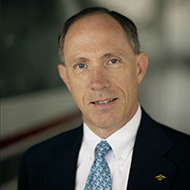A blue and white Cessna was making a dive at the runway. "The pilot couldn't be planning to land," said one of my companions. "Not with that kind of airspeed," said the other. Not at this airport, I thought to myself.
We all stared transfixed as one-third, then half and then two-thirds of the runway passed a few feet beneath the Cessna's wheels. The pilot was dealing with his own demons as the aircraft danced around, descended tantalizingly close to the pavement, and then rose again into the air. The Cessna eventually landed, and the pilot applied power for another try.
Four more arrivals from this Cessna interrupted our lunch conversation. Each approach was too fast, and the outcome of the maneuver was always in doubt. And then the Cessna was gone.
Other aircraft in the pattern earned scores of 7.8, 8.5 and 9.2, but the Cessna driver rated a negative number for what was an uncomfortable performance to watch. There couldn't have been an instructor on board. None of us would have allowed this, but this pilot must have been somebody's student or, more likely, was long overdue for a flight review.
In retrospect, I wish there had been a graceful way to contact the pilot and gently suggest some serious instruction. We were too far away to see the tail number. There was no accident only because the winds were light, the runway was many times too long for the Cessna, and there were no obstacles close by. But the problem will surface again because there is a funda- mental flaw in this pilot's technique.
All CFIs should know what to do when they encounter such a pilot. First, spend some time in the practice area helping the pilot get reacquainted with slow flight and stalls. I'll bet the pilot is stall-shy, which explains the extra airspeed on final.
Way too many instructors rush to teach in the pattern before the student has learned the fundamentals. It may be more exciting for the instructor to save the aircraft during each landing, but that's no way to build a solid foundation for the fledgling pilot.
After the air work is polished, then it's time for the pattern and two critical rules. Rule number one: When the aircraft is going to touch down beyond the first third of the runway, go around! Rule number two: Know the right landing speed and learn to be within a few knots of it, depending on conditions. Consider going to a relatively short field and letting a tough environment drum the sloppiness out of your students. Any fool can land a trainer in 5,000 feet, and many do. The damage usually occurs on the shorter runways.
Like Goldilocks and the porridge, landings must be not too fast and not too slow. They must be just right.



